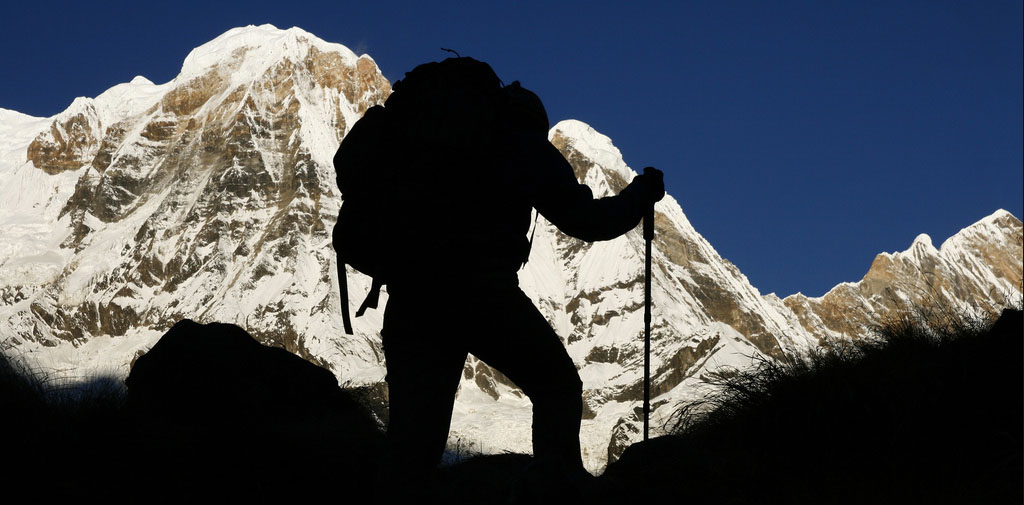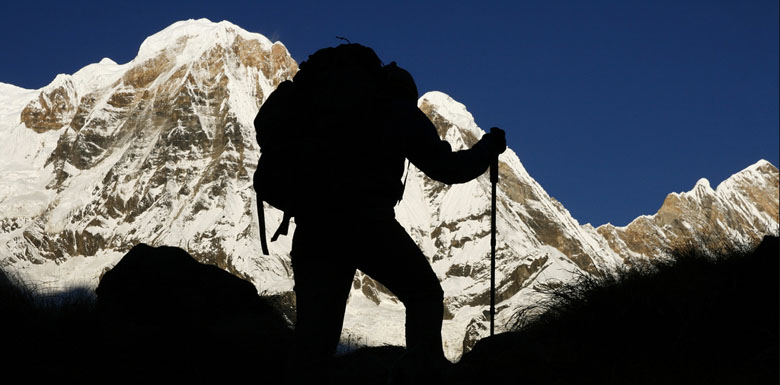

Ali Beittoei


Ali Beittoei
* The information on this page is the consensus among experienced trekkers but is not intended to replace the advice of a medical professional. Consult a doctor before trekking at high altitudes or using any medications.
Quite simply, drink a minimum of five liters of water per day, no matter what. This is easier at lower elevations when it’s hot, but becomes more burdensome when temperatures cool off and you perspire less. After a few liters you may feel properly hydrated, but your body is doing extra work with less oxygen and needs the water. Force down five liters per day, without exceptions.
Treks at altitude should avoid big single-day gains in elevation (more than 1,500 vertical feet). A common misconception about trekking at high altitude is that physical condition dictates the body’s ability to fend off altitude sickness. This causes many people who are “in good shape” to ignore the rules of acclimatization, go too high too fast, and have problems. Your itinerary should factor in altitude gains and consequently some hiking days will end early. Embrace the pace, rest your legs, and hydrate.
You will acclimatize better if you expose yourself to higher altitudes but return to a lower altitude to sleep. After setting up camp, scramble up a nearby hill, scope out the scenery, and head back down for a better night's rest. When you have a rest day, use the opportunity to hike to higher elevations and back down—even a few hundred vertical feet is worth the effort. At higher altitudes—around 10,000 feet and above—this rule becomes even more important as your body is learning to cope with considerably less oxygen.
Your body is doing more work than usual so make sure to stay nourished and full of carbohydrates. For a dependable snack, Nepal has embraced the Snickers bar wholeheartedly and it can be found even in the tiniest villages (and for very cheap). Too much sugar, yes, but full of good things like nuts and chocolate. Do a good deed and buy some for your porters and guide whenever possible.
By following the above rules, you will greatly increase your odds of staying healthy throughout your trek, but everybody reacts differently to altitude so pay close attention to how you feel. Every trek should have rest days built in and you shouldn’t be afraid to use them. Stay hydrated, wear sunscreen, and have layers available for protection from the powerful sun. Avoid alcohol and other substances. Monitor yourself and always communicate any health concerns to your group.
An estimated 75% of people feel some affects of altitude, mostly in the form of headaches, nausea, fatigue, and trouble sleeping. These are actually mild manifestations of Acute Mountain Sickness (AMS). Mild AMS should not interfere with normal activity and the symptoms should subside as acclimatization occurs. As long as the symptoms are mild, it’s generally okay to continue hiking up at a moderate rate. If feeling poorly persists or worsens, turn around.
The only treatment for altitude sickness is descent, but medication can help with the symptoms. Consult a doctor before use.
In severe cases altitude sickness can be truly life-threatening. If a trekker ever gets an unusual or severe headache, or feels unusually short of breath, they should immediately descend 2,000 feet (600 meters), no matter the time of day. High Altitude Pulmonary Edema (HAPE), excess fluid in the lungs, and High Altitude Cerebral Edema (HACE), swelling of the brain, are rare but life threatening conditions that require immediate descent and medical attention.